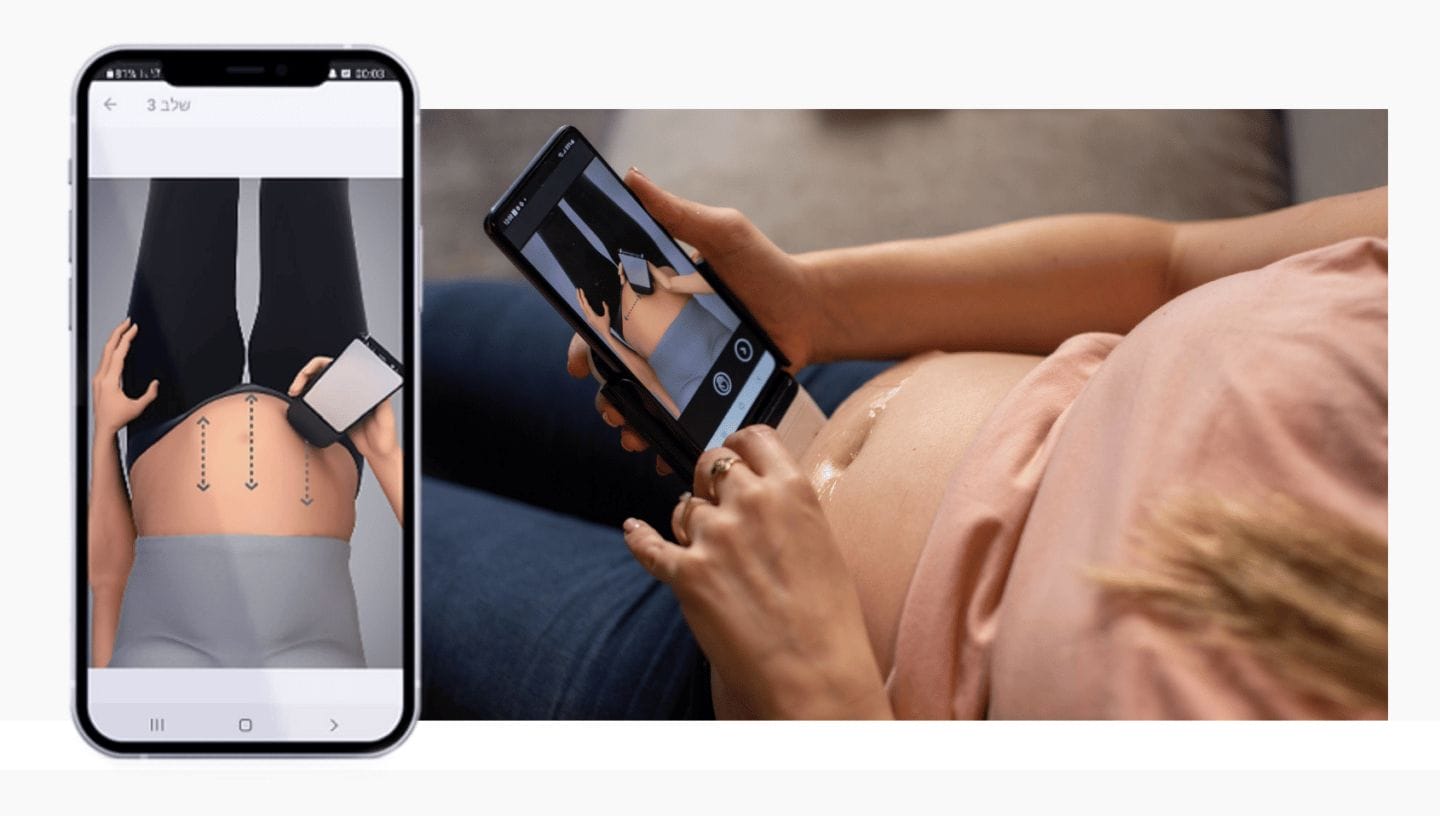Could at-home ultrasounds soon be part of prenatal care?

Prostock-studio/Shutterstock
Having the ability to do your own ultrasounds at home means you could take immediate action when those all-too-common pregnancy fears strike.
Even with the recent boom in telehealth access during the pandemic, nothing has yet to replace the routine ultrasound visits common throughout pregnancy to gauge your baby’s growth and development. If you need an ultrasound, it’s hard to avoid a hospital visit. But that may be changing, thanks to a new at-home ultrasound device.
Israeli company Pulsenmore has developed an at-home ultrasound scanner that allows pregnant people to perform ultrasounds at home by docking their smartphone into an ultrasound-equipped cradle, then beaming the scans directly to doctors for a review and consultation about the results. The device not only allows birth care providers to better monitor high-risk pregnancies, but it also empowers birthing people to be more involved in their own prenatal care.
Related: Here’s how Chrissy Teigen is advocating for herself during this pregnancy
Dr. Elazar Sonnenschein founded the company after a pregnant relative reached out, worried that she hadn’t felt her baby move for a while and wondering whether she should go to the hospital for an ultrasound.
“I began asking myself why ultrasound couldn’t be turned into a home monitoring device to help mothers everywhere connect with healthcare providers who could review their scans remotely,” Dr. Sonnenschein said in a statement.
Having the ability to do your own ultrasounds at home means you could take immediate action when those all-too-common pregnancy fears strike.
Creating a ‘virtual hospital’
After adapting existing ultrasound machines and miniaturizing them, Dr. Sonnenschein was able to create an affordable device that was easy enough for non-medical professionals to use. A corresponding smartphone app offers users instructions on how to perform a transabdominal ultrasound, and then sends virtual scans for review by sonographers and OBGYNs. Results are then sent back to the patient’s phone, and a doctor can schedule a follow-up call if needed. In Israel, the devices are currently subsidized for some patients by a major insurance company.

The benefits are far-reaching. During the Russian invasion of Ukraine, refugees at the Ukraine border—both pregnant and not pregnant—were able to use Pulsenmore’s device to send scans to medical centers in Israel, essentially creating a ‘virtual hospital’ for people in need of care.
“Pulsenmore’s device allows physicians to better monitor those pregnancies that need a higher level of attention, but it also reduces the need for unscheduled visits to the ER. Patients report lower levels of anxiety and more control over their pregnancies,” reads a statement from GE, who recently invested in Pulsenmore.
Related: What you’ll find out at your baby’s anatomy ultrasound
GE says it plans to partner with Pulsenmore to distribute its existing products around the globe and develop new ones that take advantage of the growing demand for at-home care.
What is an ultrasound?
An ultrasound is a diagnostic imaging tool that uses high-frequency sound waves to create a picture (sonogram) of internal organs and soft tissues. Ultrasounds in pregnancy can either be performed transvaginally (usually in early pregnancy) or transabdominally (later in pregnancy) to measure fetal growth, development and gestational age, as well as to check for congenital conditions, monitor heart rate and the level of amniotic fluid present.
In routine prenatal care, ultrasounds are typically performed on the following schedule:
- One in the first trimester to confirm the estimated due date
- One around 20 weeks to perform a fetal anatomy scan, at which point the assigned sex of the baby can usually be determined.
In some cases, additional or repeat ultrasounds may be warranted to confirm findings or to monitor higher-risk pregnancies. That’s when at-home ultrasounds could prove especially useful.
Related: The ultrasound tech can probably detect if your baby will be left-handed
Risks from ultrasounds are low
Ultrasounds are considered to be very safe procedures, with little to no risk to the developing baby. “Currently, there is no evidence that ultrasound is harmful to a developing fetus. No links have been found between ultrasound and birth defects, childhood cancer, or developmental problems later in life. However, it is possible that effects could be identified in the future,” notes The American College of Obstetricians and Gynecologists (ACOG), which is why they don’t condone “casual use of ultrasound during pregnancy.”
Home ultrasound use underscores a need for more research in this area, as we simply don’t know the effect of more frequent ultrasound exposure during pregnancy.
Related: This embroidered ultrasound allowed a blind dad to ‘see’ his baby
However, a recent landmark study found that when pregnant women over 35, who are considered to be of advanced maternal age, are offered more prenatal care in the form of increased ultrasounds (more than two) and special fetal monitoring, pregnancy outcomes improve—as compared to their slightly younger counterparts.
The study authors also note that more research is warranted to understand which kinds of prenatal care have the most impact on improving pregnancy outcomes, but it’s promising that they saw improvements with increased prenatal monitoring—including more ultrasounds.
Sources
Geiger CK, Clapp MA, Cohen JL. Association of Prenatal Care Services, Maternal Morbidity, and Perinatal Mortality With the Advanced Maternal Age Cutoff of 35 Years. JAMA Health Forum. 2021;2(12):e214044. doi:10.1001/jamahealthforum.2021.4044





































